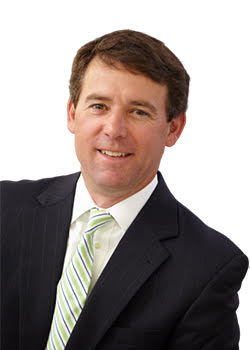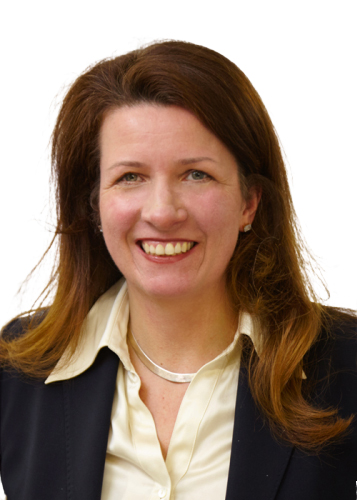What We Learned at J.P. Morgan 2017
Another J.P. Morgan Healthcare Conference has come and gone, and this year’s event was perhaps the most hectic yet. Despite the busy schedule, the Westwicke team returned energized by what we heard in San Francisco.
After dozens of meetings with a lot of great companies, two things in particular became clear to me. One is that healthcare stocks seem poised for a better 2017 than they had in 2016. Another is a potential increase in M&A activity. In fact, we woke up on the first day of the conference to the news of United Healthcare acquiring Surgical Care Affiliates. Who knows if this theme will continue through the rest of the year, but many of the quality companies we had the opportunity to chat with this week could be attractive targets to both strategic investors and the sponsor community.
As we departed San Francisco, I asked my colleagues to reflect on their own experiences and offer their key takeaways from the most important healthcare investor event of the year. Here’s what they had to say:
Investor Sentiment Is Improving
The overall tone of the conference from a capital markets perspective was one of cautious optimism. Healthcare was among the worst-performing sectors in the S&P 500 in 2016. And that performance, coupled with the spikes in volatility several times during the year, led to a significant decline in capital markets activity in both healthcare IPOs and follow-on transactions.
The sentiment improved considerably in late 2016 given the positive reaction in the markets to the U.S. presidential elections and improvement in the U.S. macroeconomic environment. This has led to better performance for the healthcare-specific market indices, which is driving the optimism among capital markets professionals.
It is interesting to note that the outlook seems relatively positive for issuers in the life sciences and healthcare services/IT sectors, with a number of companies that we talked to considering private financing rounds or IPOs in 2017. However, companies in the med tech/diagnostics sector seemed to be taking a more patient approach given the challenging valuations.
Other themes included continued focus on the issue of drug pricing and an expectation of strong M&A activity driven by potential changes in the corporate tax code and repatriation holiday, coupled with strong interest from large strategic buyers for late-stage assets.
— Sameer Khambadkone, Managing Director
Cross-Over Financing Seen as Key to a Successful IPO
While many remain optimistic about the potential for an “open” IPO market for biotech and pharmaceutical companies in 2017, the overwhelming expectation from both investors and bankers at J.P. Morgan was that companies need to do a cross-over financing ahead of an IPO. Any company considering an IPO in 2017 or early 2018 should strongly consider this when designing their financing strategy. Insider participation is likely to be a key component of a successful IPO.
— John Woolford, Managing Director
The Opioid Epidemic Is an Emerging Investable Theme
The opioid epidemic has reached a scale and scope that that has piqued the interest of healthcare companies. I attended numerous presentations and one-on-one meetings in which the need – and opportunity – to address the growing epidemic was mentioned by pharmaceutical manufacturers, facility operators, providers, and healthcare IT vendors. While it’s likely that a number of different approaches will be offered (some more viable than others), it is clear that the opioid epidemic, though tragic, is becoming an investable opportunity in the U.S.
— Asher Dewhurst, Principal
Public Company Financing Likely to Come Before IPOs in Biotech
While this may be the year the biotech IPO market gets more active – 2016 was mediocre by almost any standard – there are likely to be a slew of already-public companies (which were also shut out of capital-raising in 2016) that need to raise additional financing first. This plausible theory was relayed to me in a meeting with a banker and seems to make some sense. It follows that if investors’ preference is to put their money to work, they will likely do so with companies they are already familiar with (i.e. in follow-ons for already listed entities), which could mean that biotech IPOs may only really get going later in the year.
— Laurence Watts, Principal
Five Ideas for Making the Most of J.P. Morgan
In addition to insights about the healthcare marketplace, J.P. Morgan also invariably delivers lessons about making the best use of your time at the following year’s conference. So we suggest keeping these points in mind when planning for 2018:
Get There Early
As the victim of massive flight delays and cancellations ahead of the conference, I will strongly consider arriving at future conferences a day earlier to offset any potential problems with travel schedules. J.P. Morgan gets bigger and more jammed every year, so having the flexibility to schedule meetings on Sunday ahead of the Monday kickoff could be highly efficient and a productive use of some extra time. Based on an informal survey of attendees this year, a surprising number arrived on Saturday. And who knows, an early arrival may allow for an earlier departure later in the week. One can only hope!
— Robert Uhl, Managing Director
Take the Meetings That Matter
At J.P. Morgan, I’m asked “How many meetings have you had?” more often than “How good have your meetings been?” People tend to focus on the quantity vs. the quality. After attending the conference for many years and having taken the “speed dating” approach, I now encourage companies to take a slightly more targeted strategy and to book meetings that they really think could be most valuable to their business. I prefer to look at the yield of the meetings as opposed to the sheer numbers.
Try to use the meetings to meet with people that geographically make sense and are typically harder to see. It always seems funny to me that companies set up meetings at J.P. Morgan with people who are literally based right down the road from them that they can see anytime.
— Patti Bank, Managing Director
Be Flexible and Know Your Audience
While developing a detailed conference schedule is critical to getting the most out of your time in San Francisco, be prepared to adjust on the fly. Between attendees over-stuffing daily schedules and winter travel, there is a good chance you’ll experience meetings running late, last minute cancellations, and no-shows. Don’t let any of these issues derail your goals for the conference. Expect last minute changes and plan accordingly. Informal settings – meals, coffee breaks and company-hosted events – can serve as a great opportunity to fit in face-to-face meetings that would have otherwise been a missed opportunity.
Also, your schedule will likely reflect the fact that J.P. Morgan brings together a wide variety of investors. Understanding who you’re sitting across from is crucial. A healthcare-specific portfolio manager at a large mutual fund with whom you have met multiple times over the last six months and a generalist analyst at a small hedge fund who has never heard your presentation will benefit most from very different versions of your story. Being able to deliver your story in a way that is tailored to your audience can help you make the most of your short time in front of investors.
— Mike Vallie, Vice President
Plan the Logistics Well in Advance
Companies that plan well ahead logistically have a better experience during the week. J.P. Morgan shouldn’t sneak up on anyone – it comes around the same time every year – so make sure you’re ready. Scrambling for hotel rooms and meeting rooms at the last minute adds to the stress (and the cost) of the week. Managing the volume of meetings is tough enough without having to scramble to find space.
— Jamar Ismail, Vice President
It’s almost never too early to start thinking about an event as large and important as the J.P. Morgan Healthcare Conference, so get in touch if you’d like to talk about how to make the most of your time there next year. I hope you’ll find these insights helpful in the meantime.






























Leave a Reply